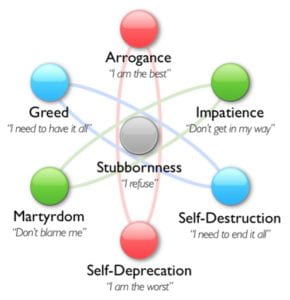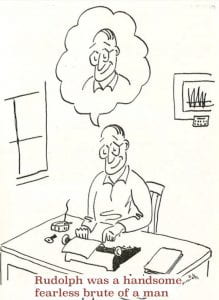While hosting workshops in the USA I found that the most popular ones were those with a catchy title, such as “10 Top Tips for Technology Teachers.” Hence the title for this post. Catchy, huh? Well, almost. The danger is that my top 5 tips might not be your ones. The following are from an article in masterclass.com and I will personalise a few to give my perspective. Let’s get into this:
- Make your main character compelling. In the thriller genre—just like in real life—a conflict is rarely as simple as “good guy vs. bad guy.” Good thrillers often feature protagonists that are flawed and complex…Readers relate to imperfect heroes, and having a main character with flaws will increase the tension and stakes of your story. Having a deep, three-dimensional main character is an essential ingredient of a successful thriller. [I totally agree. Of most importance is to allow the flaws in your main character to enable them to change/flip 180 degrees/grow into the villas. Mine did this by mistake. He started out as an ageing spy, but…oops, can’t give it away that easily!] Can you find the main character here below? Yes, of course you can, but is he/she compelling enough to stand out among the others?
 More about character flaws can be found here.
More about character flaws can be found here.

- The opening scene has plenty of action. Readers MUST be on the edge of their seats from the very first page. The opening scene of a thriller novel should introduce the crime, conflict, or stakes as quickly as possible. The best thrillers hook their readers with instant action, then fill in the necessary character and storyline information later. [Comment: avoid fluff at the start. Action, action, action. Some suggest that a thriller should start at the point of most conflict, then unpack it in the following chapters.]
- Create an interesting villain. Even your antagonist is unforgivable, their motivations should be rooted in a relatable desire or emotion. In other words, they should be motivated by their own twisted, internal logic (e.g. The Silence of the Lambs its subsequent sequels, readers learn through flashbacks that Dr. Hannibal Lecter witnessed the murder of his sister when he was young. Therefore, Dr. Lecter is more than just a psychopathic serial killer—he is a person whose evil actions stem from a heartbreaking trauma). Readers are more likely to be engaged in your villain’s story and character development if they can recognize seeds of themselves in your antagonist.
- Build obstacles for your protagonist. If there’s one thing that all bestselling authors of thrillers are good at, it’s putting their protagonist in harm’s way. Your main character should experience heartbreak, trauma, and anxiety throughout the book. Sometimes, the most effective obstacle is a ticking clock or strict time limit to complete their task. Obstacles will also increase the narrative satisfaction of the end of the book, when your protagonist finally overcomes the hurdles and triumphs over adversity. [Yes, have a chase that is race against time.]
- Add plenty of plot twists and turning points. More so than any other genre, thriller novel writing requires the story to contain an abundance of plot twists, turning points, and cliffhangers. If you’re experiencing writer’s block when writing a scene, ask yourself what a reader might expect to happen next. How can you subvert those expectations? If a scene feels uneventful, think about what plot element or character you can introduce to raise the stakes or create a dilemma for your protagonist. Plot twists will ensure that your thriller is a page-turner and make it impossible for your reader to put it down. [Right on! In my last thriller I was writing a new chapter when it suddenly took a turn that I never expected.]

 How does an author find their characters? Here’s a clue—look around you when out and about, at the cafe or while shopping. Everyone you meet and everyone you see has the potential to be a character in your novel! I have used friends and even people sitting opposite me on a train (well, their shoes got into a novel). You can have fun when writing to invent a character who is a blend of a few people. Take someone’s nickname, another’s hairdo. Add a dress from a shop window, and a handbag from a google search. Next, add some details—a hook nose, bald head, unshaven, tattooed, limping, sunken eyes, etc. In my new novel, one of my characters wears lots of yellow. This may not seem significant, but it does later in the book when Sir Christopher Jenson (based a someone close to me) discovers a woman wearing yellow who is cuddling up to another character who has just lost his wife in a skiing accident. Yellow connects these two women for the reader and…I can’t tell you what happens!
How does an author find their characters? Here’s a clue—look around you when out and about, at the cafe or while shopping. Everyone you meet and everyone you see has the potential to be a character in your novel! I have used friends and even people sitting opposite me on a train (well, their shoes got into a novel). You can have fun when writing to invent a character who is a blend of a few people. Take someone’s nickname, another’s hairdo. Add a dress from a shop window, and a handbag from a google search. Next, add some details—a hook nose, bald head, unshaven, tattooed, limping, sunken eyes, etc. In my new novel, one of my characters wears lots of yellow. This may not seem significant, but it does later in the book when Sir Christopher Jenson (based a someone close to me) discovers a woman wearing yellow who is cuddling up to another character who has just lost his wife in a skiing accident. Yellow connects these two women for the reader and…I can’t tell you what happens!